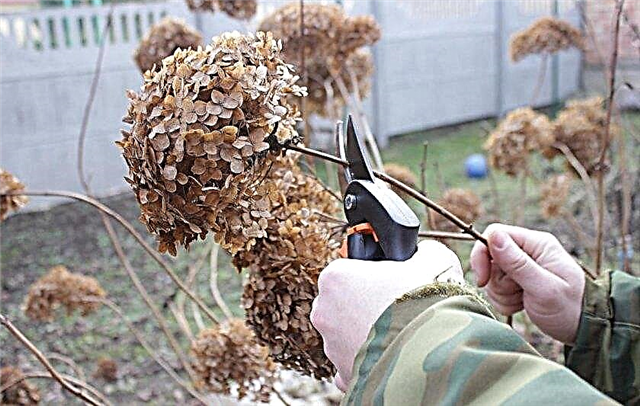The gazebo with a gable roof is especially popular. This is not surprising, because such a configuration of the roof allows you to solve not only aesthetic, but also practical issues related to the removal of water, snow, resistance to heavy gusts of wind, etc. How to make a gable roof with your own hands, read below.
Dimensional Standards
The gable roof structure is an inverted letter “V”. At first glance, it seems very simple, but when determining the optimal shape, many pitfalls come up, which will be impossible to get around without knowledge of elementary technology - dimensional standard is the relationship of the parameters of all elements of the roof:
- The width is completely dependent on the dimensions of the frame and the material for coating.
- The slope is selected in accordance with weather conditions and the type of roofing.
- The height is determined by the combination of the first and second parameters.

The configuration and all parameters are set by the rafter frame. On the edges of the arcs that make up it, slopes are mounted that form a dihedral angle. If you do not understand the configuration features, it will be quite difficult to determine the geometry of the construction. Hanging technology is used to cover the arbors.
Did you know? In Russian culture, the primary meaning of the word "gazebo" was a place for night fortune telling. Initially, it was a hut or even a bench for gathering evening gatherings.
The support in this case will be the frame of the walls. Hanging rafter legs form an equilateral triangle and do not transfer bursting load on the holding elements. The roof is installed either immediately assembled or created in place from individual parts. The width of the roof in this embodiment will be formed by frame beams.

The parameters of the overhang will depend on the coating material of the roof and walls:
| slate | no more than 10 cm |
| shingles | 30–40 cm |
| metal tile | 40-50 cm |
| professional sheet | 50 cm |
| ceramic tile | 50-60 cm |
If a tree is used to make the walls, then the parameters of the overhang should be increased by 15 cm, because the structure will need additional protection from oblique rains. This approach will require additional reinforcement of the wall box. The angle of inclination should be the same for both slopes of the roof. On average, the parameter varies from 10 ° to 60 °.


Factors affecting this indicator are:
- coating material in conjunction with the mass of its lathing - the denser the roofing parts are laid, the higher the structure should be, and vice versa, the fewer joints and overlaps you have to complete, the lower you can place the canopy;
- assembled roof weight - more mass, steeper tilt angle;
- climatic conditions - a high slope is made where heavy precipitation is often observed, gentle - in regions with strong winds.
In gable roofs, the height of the ridge is also taken into account. This parameter should not be less than 1.6 m.
Necessary materials and tools
The construction of a gable roof must begin with a preliminary estimate. Although it will have inaccuracies, adjustments will appear in the process, but it will help to identify the main items of expenditure.
According to preliminary estimates, the arrangement of the roof will require:
- Mauerlat timber - usually a material with a cross section of 100 × 150 mm or 200 × 200 mm is taken, the quantity is considered along the perimeter of the box and 5% of the margin is added;
- boards for rafters - dimensions 25 × 150 mm or 100 × 150 mm, the flow rate is calculated by multiplying the length of the outer section by the amount and add a margin of 20%;
- a bar for puffs and struts - the optimal section is 50 × 100 mm or 100 × 100 mm, taken with a margin of 10%;
- lathing materials - the consumption completely depends on the type of finishing lining;
- waterproofing - miscalculations are made depending on the type of roof and the slope angle (high cover only along the overhangs, bulges, concavities and ridge, and low isolate completely);
- roof covering - it is considered according to the area of slopes;
- sheathing of gables and overhangs;
- angles, plates, screws, staples, nails, studs, anchors:
- mineral wool.
 Of the tools you will need a screwdriver, saw, hammer, level.
Of the tools you will need a screwdriver, saw, hammer, level.
Drawing
To build a gable roof correctly, you first need to make a drawing. If there is no experience in such a business, then you can use various sites that provide schemes and calculations.
In addition, there are resources that have calculators to help you get all the exact values - height, width, angle. It is only necessary to enter the dimensions of the wall frame. Based on the information received, it will be very easy to depict a roof that is ideal for a particular building.

Step-by-step construction
The system for constructing a gable roof does not seem complicated if you first correctly perform all the calculations and draw up a drawing. Further, it remains only to add all the details according to the existing parameters.
Regarding the choice of roofing material, it is worth considering the overall dimensions of the structure and its internal arrangement. For small structures, polycarbonate is suitable. Designs that will be used as summer kitchens are best covered with metal, ceramic or slate elements.
Important! For the roof to last longer, all wooden parts should first be opened with a water-repellent composition.
Preparatory work
Before you begin installation, you need to prepare the right material and tool. If you plan to install a barbecue in the gazebo, then you should take care of this in advance. In such a design, it is necessary to provide fireproof elements, as well as a chimney. In principle, the preparatory work ends there and you can proceed directly to the installation of the roof.
Skate installation
The skate is an additional element that fixes the slopes between each other. It occupies a leading position in combining joints and aesthetic design. Its installation is carried out in the last turn, when all the elements are assembled and there is already a roof on the roof.

Step-by-step installation of the ridge:
- Having finished laying the last row of roofing material, trim the parts so that a small ventilation gap forms in the central part.
- On the junction line of the slopes to carry out the processing of waterproofing material.
- The space between the end parts of the planes forming an angle, close with mineral wool. Do not stuff tightly so as not to block the ventilation access. Compaction with this material will help to avoid the accumulation of snow under the ridge in the winter.
- Start installing the first strip of the element in question with the edge. Fix the part with self-tapping screws with rubber gaskets. At the end of the manipulation, stretch the thread along the line for the further arrangement of the ridge elements.
- Position the corners of the part with an overlap of at least 5 cm or in accordance with the stamping waves.
- Put the end elements of the ridge, if they are provided for by a specific model.
Video: how to make a skate for the roof
Installation of rafters
Raftering will be safer if the installation is carried out on the ground, having assembled a template. To do this, take the finished drawing and cut out the details in size in pairs. Each rafter is attached to the crossbar (transverse bar) using self-tapping screws and angles.
The joints of the angle between the paired elements forming the angle are fixed with a half-tree technique. This approach involves sampling the end of the timber at 0.5 of its depth. Thus, steps are formed at the ends of the parts, superimposed on each other. To make the joint stronger, both beams are drilled through and hammered into the hole.
Important! If the structure at the point of formation of the angle rafters does not seem strong enough, the situation can be fixed by fixing a metal plate on this section.
The protrusions of the crossbars are cut so that these areas do not interfere with further connection with the crate. Between the double elements of the rafters, a step is observed within 60–70 cm, depending on what area you need to cover.

Installation of the crate
The crate is a row of timber or boards laid at right angles to the rafters. The step between the elements is determined by the size of the roofing. The smaller the parts, the denser the crate will fit. In some cases, it is generally made solid.
Installation of the crate step by step:
- Make markings on the rafters.
- Fix the bars in the designated places. After fixing each individual element, check its location relative to the previous one using the building level.
Did you know? Until the 20th century arbors were built exclusively of wood or stone. Now, metal, plastic, aluminum, etc. are used for this purpose.
Roof
When the gable template is ready, the roofing material is fastened directly to the crate. Do this according to the manufacturer's instructions. The sequence of the above manipulations may differ depending on the type of material, therefore, before starting installation, carefully study the features of the roofing and its operation.

After the described work and installation of the ridge, end plates are mounted and the roof is ready. In a similar way, two-level roofs can be made for greenhouses or outbuildings.
The construction of a gazebo with a gable roof requires patience and care, as well as compliance with some nuances. But then this design will last a very long time, especially if you approach wisely the choice of materials. A similar design of the roof is equally well suited for light wooden arbors and for capital structures made of metal.












